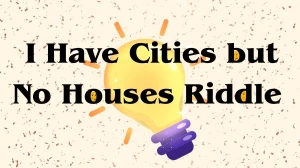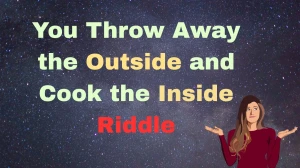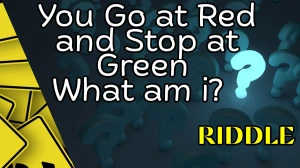You Can’t See Me, Yet I Can Touch You Riddle
Riddles have an age-old charm—mysterious, playful, and often philosophical. One such captivating riddle is:
“You can’t see me, yet I can touch you.”
At first, it may seem like a child’s brain teaser, but with deeper reflection, it challenges our perception of the invisible forces around us. What could possibly be unseen but still capable of touching us?
Let’s explore the possibilities, meanings, and cleverness behind this riddle.
Hints
The riddle cleverly plays on the contrast between visibility and sensation. Here’s a breakdown of its parts:
- “You can’t see me” – This suggests that the subject is completely invisible, not just hidden or camouflaged, but truly unseen.
- “Yet I can touch you” – Despite being invisible, this “thing” has a real presence—it interacts with the physical world and affects us directly.
Possible Answers for the Riddle "You Can’t See Me, Yet I Can Touch You"
This riddle has sparked several interpretations. Here are some of the most thoughtful and creative guesses:
1. Wind – The Most Popular Answer
Wind is the most commonly accepted solution. It fits the riddle perfectly:
You can’t see wind itself, but you can feel it against your skin, hear it rustling the leaves, and even see its effects in the swaying of trees. It’s nature’s invisible force, and it’s with us every day.
2. Air – The Silent Companion
Air, though similar to wind, is more subtle. We don’t usually think about the air around us unless it’s moving. It’s the quiet, unseen atmosphere that fills every space, and it’s constantly in contact with us—touching our skin, filling our lungs.
3. Emotions – Invisible, Yet Powerful
Some take a more metaphorical approach and suggest emotions like love, fear, or grief. These are things we can’t see, but they certainly touch us—deeply. Love can warm your heart, fear can give you chills, and sadness can weigh you down—all without being visible.
Why Wind Stands Out as the Best Answer?
While all the above interpretations hold water, wind stands out because it meets both criteria of the riddle in the most literal and straightforward way:
- It is physically real.
- It is entirely invisible.
- It touches and affects everything it passes.
Final Thougths
“You can’t see me, yet I can touch you” is more than just a clever line—it’s a puzzle that blends science, philosophy, and imagination. Whether you take it literally and think of wind, or metaphorically and reflect on emotion or energy, it encourages us to think beyond what we can physically observe.
It’s a gentle prompt to stay curious about the unseen because sometimes, the things we don’t see are the most powerful of all.






